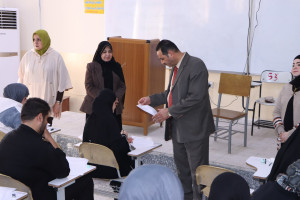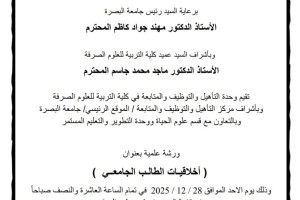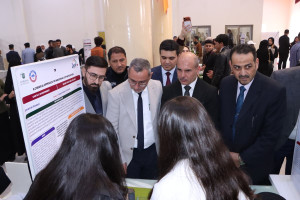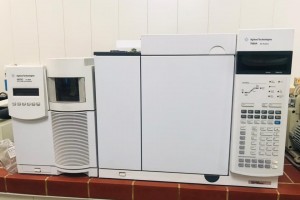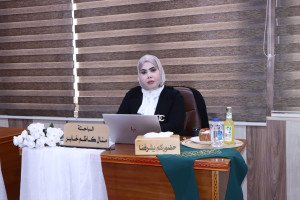
The College of Education for Pure Sciences in the Department of Physics at the University of Basra discussed a doctoral thesis on the assessment of uranium and boron concentration in the Shatt Al-Arab River and the marine environment in Iraq using the CR-39, ICP/OES and ICP/MS solid nuclear trace detector techniques.
The thesis managed by the researcher (Ali Fakher Habib) included
The work included measuring the concentration of boron and uranium in the Shatt al-Arab, which passes through some areas located on its bank within the province of Basra, located in southern Iraq, until it flows into the waters of the Arabian Gulf, in addition to the Iraqi marine environment. This work included 79 sediment samples and 74 water samples. In order to find the boron concentration in water samples, ICO-OES technology and SSNTDs technique were used by bombarding 10B with thermal neutrons from a source (241Am-Be). Where the results showed that the highest concentration of boron in river waters was recorded using ICP-OES technique (1.801ppm) and in marine waters (7.395ppm). When using SSNTDs technique, the highest concentration of boron in river water reached (2.665ppm). These results indicate that the concentration of boron in the Shatt al-Arab and the studied sites from the waters of the Arabian Gulf is still safe and within the permissible limits, with the presence of a few marine samples that contain concentrations of boron slightly higher than the permissible concentration. The second study included measuring the concentration of uranium in the Shatt al-Arab sediments and the Iraqi marine environment. The study included different areas of the north, central and south of the Shatt al-Arab and a number of parts of the Iraqi marine environment, namely Khor Al-Zubayr, Khor Abdullah Canal and Al-Faw Port, as well as the oil ports. The study included calculating the concentration of uranium using ICP-MS technology and SSNTDs technology. To calculate the concentration of uranium. The results showed that the uranium concentrations were within the permissible limits. The highest concentration of uranium was reached in Shatt Al-Arab using ICP-MS technology (2ppm) and using SSNTDs technology (1.412ppm). The highest concentration of uranium in the Iraqi marine environment was reached using ICP-MS technology (3.7ppm) and using SSNTDs technology (4.464ppm). All data presented in this work is within the safe limits as recommended by UNSCEAR (11.7ppm).
conclude the thesis
The existence of a difference in the concentration of boron between ICP-OES and SSNTDs techniques and between ICP-MS and SSNTDs, the reason for this is due to the laboratory conditions and the devices and equipment used
The concentration of boron in salty sea water is much higher than in fresh water in the Shatt al-Arab
The concentration of boron in the Shatt al-Arab River varies, but it is within the permissible limits
The concentration of uranium in the Arabian Gulf is sometimes higher than its concentration in the Shatt al-Arab
The concentration of uranium in the Shatt al-Arab and the Arabian Gulf is within the permissible limits, noting a relative high in some samples from the Arabian Gulf. We also noted that the concentrations are generally within the permissible limits.
future business
There is a need to continuously monitor water quality in the Shatt al-Arab to know the concentration of boron, especially in areas with population activity
And the establishment of treatment units for domestic, agricultural and industrial waste and sewage water near the banks of the Shatt al-Arab
And studying the concentration of boron and uranium in the basic plants that humans feed on
And studying the concentration of boron in oil wells and oil and gas refining plants associated with oil operations
And the study of boron concentration in fertilizer factories


